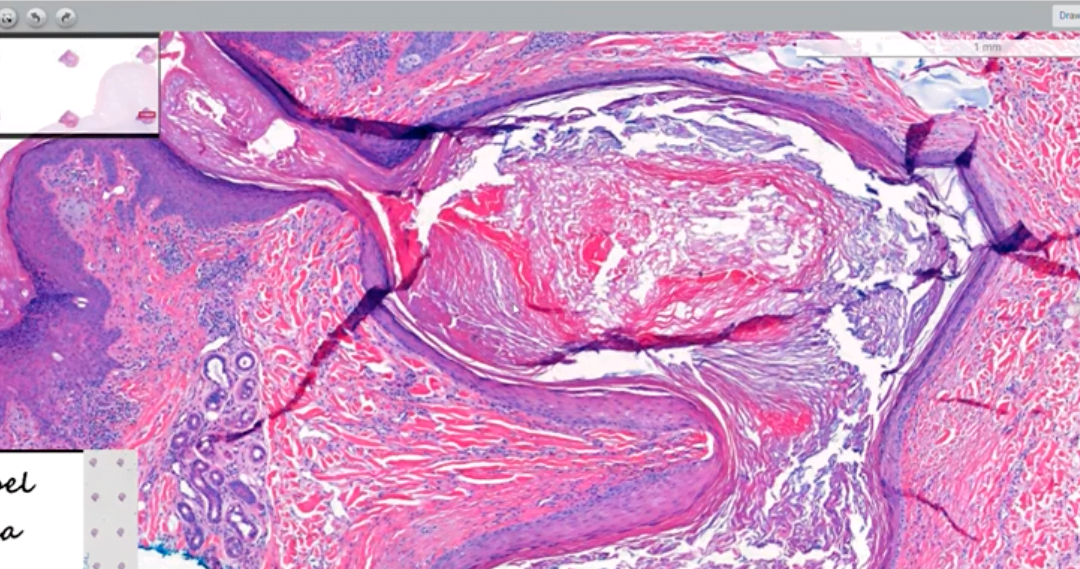Images shown are not intended to be used for the diagnosis or treatment of a disease or condition.
An epidermal inclusion cyst is the most common cutaneous cyst, often called a sebaceous cyst, which is actually a misnomer. The center of epidermoid cysts almost always contains keratin and not sebum. This keratin often has a “cheesy” appearance. They also do not originate from sebaceous glands; therefore, epidermal inclusion cysts are not truly sebaceous cysts.
In this episode of Digital Dermatopathology Digest, Rajni Mandal, MD, dermatopathologist at PathologyWatch, explains the common characteristics of an epidermal inclusion cyst.
“An epidermal inclusion cyst has an epidermis-like lining with a granular layer,” explains Mandal—as opposed to a nongranular layer, seen in a pilar cyst or steatocystoma. “Sometimes there is a connection with the overlying epidermis known as a punctum.”
Mandal goes on to mention features, the lack of which can help distinguish epidermal inclusion cysts from other common cysts, including dermoid, pilar, and vellus cysts.
Ruling Out a Dermoid Cyst
A dermoid cyst has cell walls that contain hair follicles, sweat glands, and other multiple adnexal skin structures. By contrast, an epidermal inclusion cyst lacks adnexal structures.
Ruling Out a Pilar Cyst
What makes a pilar cyst unique is that it arises from the epithelium between the sebaceous gland and the arrector pili muscle. They are lined by stratified squamous epithelium without a granular cell layer, similar to what is seen in the outer root sheath of the hair follicle, and filled with keratin.
Often presenting themselves as a round, dome-like bump, a pilar cyst is typically firm to the touch but not painful for the patient, while an epidermal inclusion cyst may become inflamed and painful to the touch.
Ruling Out a Vellus Hair Cyst
If small hairs appear in the vellum, with small red or brown bumps and a smooth dome shape, and often occur over the sternum, it is likely a vellus hair cyst.
Whether you’re in residency, studying for board exams, or a practicing dermatologist looking to stay sharp, the Digital Dermatopathology Digest video series is your informational and convenient source for dermatopathology review. Find the full series here.

